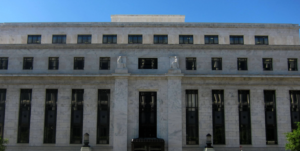US Housing Market Alert: The rising tariffs on essential building materials are significantly impacting the real estate sector, leading to increased construction costs and higher home prices nationwide. Homebuilders and buyers alike are feeling the pressure as materials like lumber, steel, and aluminum face additional import taxes, escalating overall housing costs. This blog explains how tariffs impact the U.S. housing market, offering insights for homebuyers, investors, and industry professionals to make informed decisions.
How Tariffs Are Increasing Construction Costs
Understanding Tariffs & Their Impact on Building Materials
A tariff is a tax imposed on imported goods, which increases costs for businesses and consumers. In the construction industry, many essential materials are sourced from other countries, meaning these tariffs directly raise the cost of building homes. The primary materials affected include:
| Material | Primary Source | Tariff Impact |
|---|---|---|
| Lumber | Canada | 20% tariff, increasing costs by $14,000 per home |
| Steel | China, Mexico | 5-7% price increase on structural materials |
| Aluminum | Various | Increased costs for window frames, doors, and fixtures |
Key Fact: The National Association of Home Builders (NAHB) reports that tariffs on Canadian lumber alone have increased the cost of an average new single-family home by $14,000.
Impact on Housing Prices & Affordability
Why Home Prices Are Rising Rapidly
Due to higher construction costs, developers must pass these expenses onto buyers. This leads to a significant increase in home prices, making housing less affordable for many Americans.
How Housing Prices Have Changed Over the Last Year
| Year | Median U.S. Home Price | % Increase |
| 2023 | $420,000 | 4.8% |
| 2024 | $447,000 | 6.4% |
Key Insights:
- The cost of building materials has risen 10-15% in the last year due to new tariffs.
- Housing affordability has dropped by 8%, making it harder for first-time buyers to enter the market.
- Mortgage rates, although declining slightly, are still hovering around 6.5%, further reducing purchasing power.
Regional Analysis: Where Prices Are Rising the Most
Which U.S. States Are Most Affected?
Certain states are experiencing more significant price increases due to high demand and increased construction costs.
| State | Home Price Increase (YoY) | Reason for Impact |
| Texas | 7.2% | High demand, rapid urban expansion |
| California | 5.8% | Already high home prices, costly materials |
| Florida | 6.9% | Strong migration, expensive building materials |
External Factor: Inflation & Economic Trends
How Inflation and Interest Rates Play a Role
Beyond tariffs, inflation and rising labor costs have contributed to soaring home prices. The Consumer Price Index (CPI) shows that general prices have risen 3.4% year-over-year, affecting everything from labor wages to construction materials.
Economic Predictions: If tariffs persist, home prices could rise another 5-8% by the end of 2025.
Key Economic Factors Impacting Home Prices
- Tariffs on materials → Increased construction costs
- Higher inflation → General price increases
- Mortgage rates → 6.5% average, limiting affordability
- Labor shortages → Delays in construction, raising overall costs
Solutions & Recommendations for Homebuyers
How to Navigate the Housing Market in 2024-2025
Given these challenges, homebuyers should consider strategic moves to secure better deals:
- Lock in Mortgage Rates Early – Rates are volatile, and locking in a lower rate now could save thousands over time.
- Explore Alternative Building Materials – Developers are shifting to engineered wood and recycled steel to reduce costs.
- Monitor Market Trends – Staying updated on tariff policies can help you predict future price changes.
Conclusion
The U.S. housing market faces significant challenges as tariffs continue to drive up construction costs, impacting affordability for homebuyers. Prices are rising faster in high-demand regions, making homeownership increasingly difficult.
Key Takeaways:
- Tariffs have caused 10-15% increases in material costs.
- Housing prices have risen 6.4% YoY.
- Certain states like Texas, California, and Florida are experiencing the most significant price jumps.
- Inflation and mortgage rates also play a role in decreasing affordability.
To successfully navigate this market, staying informed on housing trends, locking in favorable mortgage rates, and considering alternative homebuilding options are essential steps.
By following these strategies, homebuyers can make smarter financial decisions and adapt to the evolving market conditions, ensuring long-term success in property investments.
[USnewsSphere.com / nahb]





